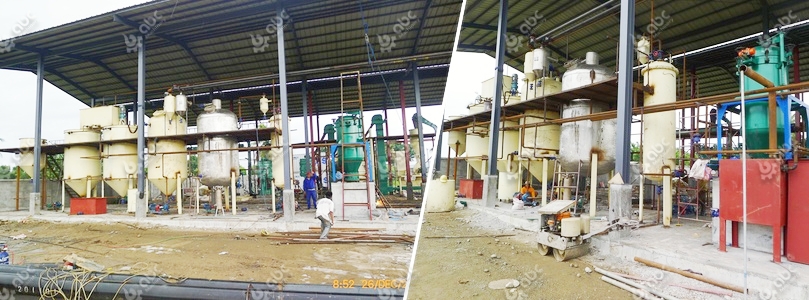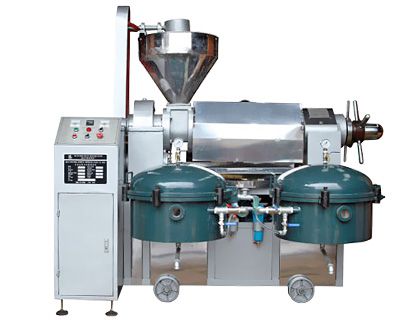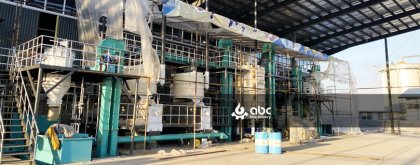
Crude Coconut Oil Refining Process Explained
Overview of Coconut Oil Extraction and Refining Process Flow
The coconut oil extraction and refining process are tightly linked stages that determine the final oil’s purity, yield, and sensory quality. The refining steps refine the crude coconut oil obtained through mechanical pressing or solvent extraction, typically containing 2–5% free fatty acids and 0.3–0.5% impurities. Integrating both extraction and coconut oil refining process stages ensures consistent quality control across production.
In a typical coconut oil extraction process flow, coconuts are first dehusked, deshelled, and dried to a moisture level of around 6–7%. The copra is then pressed using screw expellers operating at 40–60°C, producing crude oil with about 98% oil recovery efficiency. This crude oil undergoes filtration to remove solid residues larger than 50 microns before entering refining.
The refining process includes degumming, neutralization, bleaching, and deodorization—each targeting specific impurities and improving oil stability. Degumming removes phospholipids using 2–3% hot water or acid, while neutralization reduces free fatty acid content below 0.05%. Bleaching involves clay or activated carbon treatment at 90–110°C, reducing color pigments by 70–90%. Finally, deodorization—performed under 1–3 mbar vacuum at 180–220°C—removes odor compounds and volatiles.|
By optimizing these connected processes, manufacturers can achieve consistent output with higher yields—often reaching 98.5% total oil recovery in industrial setups. Enhance your integrated extraction and refining efficiency—consult our engineering specialists for customized process solutions.

Refined Coconut Oil Production Process from Crude Oil
Key Technical Parameters and Optimization of the Coconut Oil Refining Process
Refining Temperature, Pressure, and Vacuum Control
Temperature and vacuum control are critical in maintaining oil quality during the coconut oil refining process. Refining typically occurs between 180–220°C under a vacuum level of 1–3 mbar to minimize oxidation. Reaction times for deodorization average 90–120 minutes, depending on feedstock quality. Maintaining precise temperature differentials (±2°C) ensures effective odor removal without degrading lauric acid content, which forms 45–53% of coconut oil.
Physical vs. Chemical Refining Comparison
The refining method significantly affects both yield and operational costs. Physical refining uses steam distillation and avoids caustic soda neutralization, reducing chemical waste by up to 80%. Chemical refining, on the other hand, offers better control for crude oils with high free fatty acids (>3%). Below is a comparative summary:
| Parameter | Physical Refining | Chemical Refining |
|---|---|---|
| FFA Handling | Suitable for low FFA oils (<3%) | Effective for high FFA oils (>3%) |
| Yield Loss | 0.5–1.0% | 1.5–2.5% |
| Steam Consumption | 250–350 kg/ton | 200–300 kg/ton |
| Neutral Oil Loss | 0.3–0.6% | 1.0–2.0% |
| Environmental Impact | Low effluent | High effluent (soapstock) |
Refining Process Optimization Strategies
To optimize coconut oil refining parameters, producers apply automation and energy-saving technologies. Using plate-type heat exchangers, energy consumption can be reduced by 15–20%. Centrifugal separation minimizes oil loss to 0.3%. Process optimization relies on NIR (Near-Infrared Reflectance) sensors for real-time impurity monitoring and MES (Manufacturing Execution System) integration to maintain consistent product specifications.
- Energy Recovery Systems: Recover up to 25% waste heat from deodorization condensers.
- Vacuum System Optimization: Employ multi-jet ejectors with 15% higher efficiency.
- Feedstock Quality Monitoring: Online NIR analyzers maintain ±0.1% FFA accuracy.
- Degumming Efficiency Enhancement: Ultrasonic-assisted degumming shortens processing time by 30%.
- Automation Integration: PLC-based control improves batch reproducibility by 98%.

Batch Coconut Oil Refinery Machine in Processing Plant
Refining Equipment Configuration and Control Integration
A fully automated coconut refining plant typically includes a 3-stage vacuum system, a continuous deodorizer, and a centrifugal separator. PLC (Programmable Logic Controller) and SCADA (Supervisory Control and Data Acquisition) systems manage temperature, flow rate, and vacuum simultaneously, achieving less than 0.5% batch-to-batch variability.Advanced refinery setup reduces human intervention and improves product uniformity across 24-hour operations.
Upgrade your refinery with automated process control—connect with our automation engineers to achieve cost-efficient and high-purity production.
Integration of Automation Equipment in Coconut Oil Refining Systems
Automation is transforming coconut oil refining automation through PLC and SCADA integration. Automated valves and temperature sensors ensure constant reaction parameters, keeping deviation below ±1%. Intelligent NIR sensors track bleaching earth dosage to optimize chemical consumption, cutting cost by 10%.
A complete refining machine integration involves vacuum systems, heat exchangers, and deodorization towers. With automated process control, operators can monitor performance remotely and maintain continuous operation for 7,200 hours between major maintenance intervals. Implement advanced PLC control for oil refining—contact us to design your intelligent refinery solution today.
Engineering Design and Plant Configuration for Refining Projects
For efficient coconut oil refining plant design, engineers must plan for production capacity (10–200 tons/day), process layout, and safety compliance. Proper equipment selection—centrifuges, deodorizing columns, and heat recovery units—ensures operational stability and minimal downtime.
Effective industrial refining line setup includes modular installation and easy cleaning access, ensuring compliance with ISO 9001 and GMP standards. Integrated supply chain collaboration shortens project lead time by 20%. Get your customized refinery plant design and equipment layout plan—reach out to our engineering team for complete project support.
coconut oil extraction technologies continue to evolve with smarter control, higher yields, and cleaner production. By mastering each stage of the coconut oil refining process, producers can secure higher market value and consistent export-grade quality.
We receive enquiries in English, Español (Spanish), Русский язык (Russian), Français (French) and العربية (Arabic).Our professional team will reply to you within one business day.Please feel free to contact us!



 Screw Oil Press
Screw Oil Press Small Oil Mill Plant
Small Oil Mill Plant Small Oil Refinery
Small Oil Refinery Automatic Oil Press
Automatic Oil Press Multifunction Oil Press
Multifunction Oil Press Hydraulic Oil Press
Hydraulic Oil Press


![[Presidential Visit] Zimbabwe 30 Tons/Day soybean oil plant for Extraction and Refinery Was Successfully Completed](/uploads/allimg/soybean-oil-plant-press-refine-business-lp.jpg)

